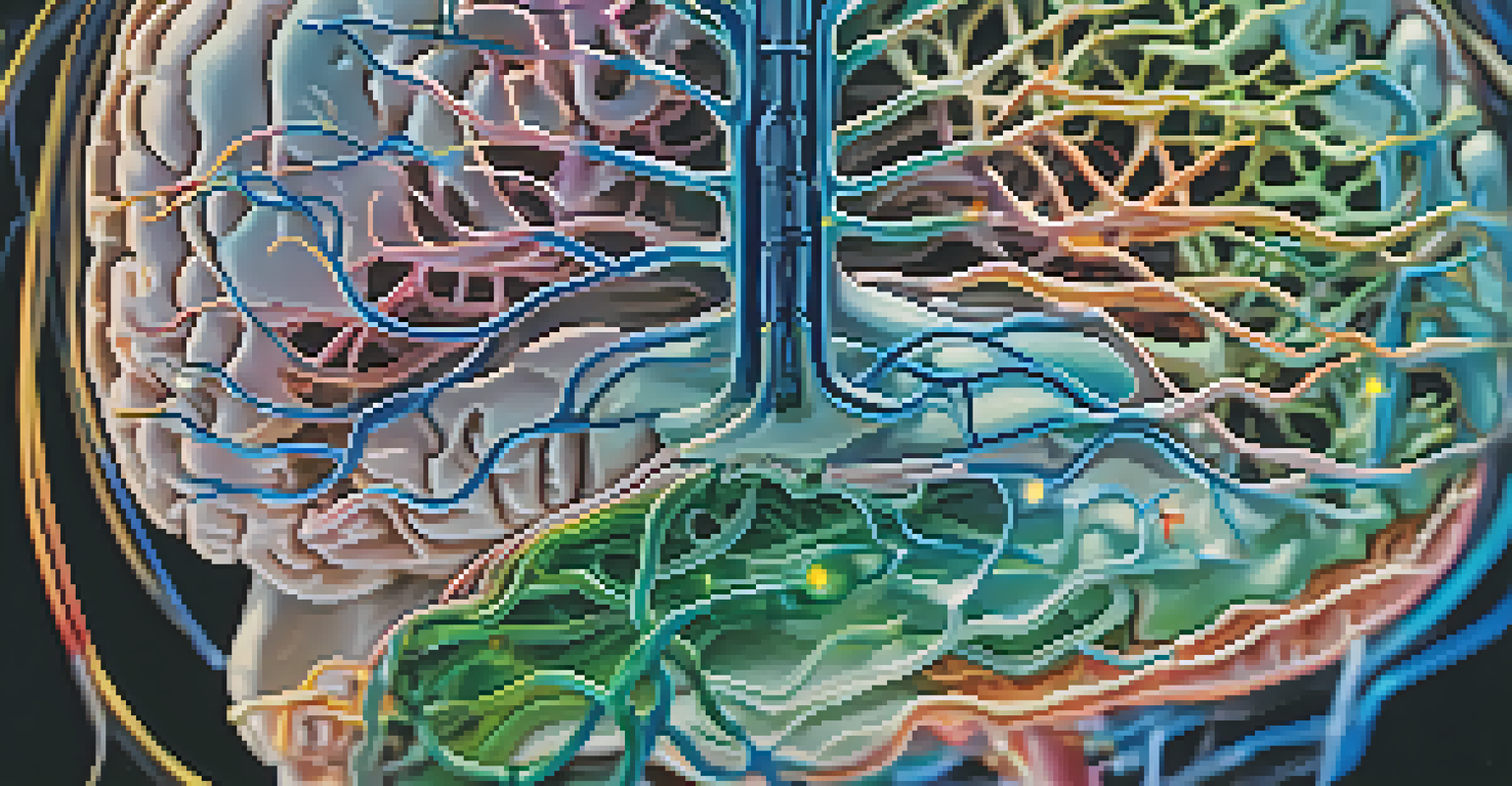Psychedelics and Neuroplasticity: Unlocking the Brain's Potential

What Are Psychedelics and Their Historical Context?
Psychedelics are substances that can alter perception, mood, and cognitive processes. Common examples include psilocybin (found in magic mushrooms), LSD, and ayahuasca. Historically, these substances were used in various cultures for spiritual and therapeutic purposes, but their potential was largely ignored during the war on drugs in the late 20th century.
Psychedelics can help us heal from trauma, depression, and anxiety by harnessing the brain's natural adaptability.
Recently, however, there's been a resurgence of interest in their therapeutic benefits, particularly in mental health. As researchers begin to explore these substances more deeply, we're discovering their intriguing connections to brain function and neuroplasticity, which is the brain's ability to reorganize itself by forming new neural connections.
This renewed focus on psychedelics is not just about their effects; it's about understanding how they can help us heal from trauma, depression, and anxiety by harnessing the brain's natural adaptability.
Understanding Neuroplasticity: The Brain's Marvelous Flexibility
Neuroplasticity is the brain's remarkable ability to change and adapt in response to experiences, learning, and injury. Imagine your brain as a vast, intricate city where pathways represent neural connections. Just like roads can be built, repaved, or closed off, these pathways can be strengthened or weakened based on our activities and experiences.

This adaptability is crucial for learning new skills, recovering from brain injuries, and even reshaping our thoughts and behaviors. The more we engage in positive experiences or learning, the stronger these pathways become. This flexibility is key to understanding how psychedelics may influence our mental health and overall brain function.
Psychedelics and Mental Health
Recent studies highlight the therapeutic potential of psychedelics in treating mental health conditions like PTSD and depression.
Research shows that psychedelics may enhance neuroplasticity by promoting the growth of new neural connections. This implies that substances like psilocybin could potentially help reset unhealthy patterns of thought and behavior, opening doors to new ways of thinking.
How Psychedelics Affect the Brain's Neuroplasticity
Psychedelics are believed to promote neuroplasticity through several mechanisms, one of which includes increasing levels of brain-derived neurotrophic factor (BDNF). BDNF is like fertilizer for the brain, encouraging the growth and survival of neurons, which are the building blocks of our nervous system.
The mind is like water. When it’s turbulent, it’s difficult to see. When it’s calm, everything becomes clear.
When psychedelics are consumed, they also affect serotonin receptors, particularly the 5-HT2A receptor. This activation leads to a cascade of neurochemical changes that can enhance mood, creativity, and emotional processing. It's like flipping a switch that lights up previously dim pathways in the brain.
As a result, individuals often report profound insights and emotional breakthroughs during psychedelic experiences, which can facilitate healing and personal growth. This suggests that psychedelics might help us overcome mental barriers, making it easier to forge new connections in our brains.
Clinical Research: Promising Studies on Psychedelics
Recent clinical studies have shown promising results in using psychedelics for treating mental health conditions like PTSD, depression, and anxiety. One notable study involved participants with PTSD who underwent therapy sessions aided by MDMA, leading to significant improvements in their symptoms.
These studies highlight the potential of psychedelics to create lasting changes in thought patterns and emotional responses, thanks to their effects on neuroplasticity. Participants often report not just temporary relief but profound shifts in perspective that enhance their overall well-being.
Neuroplasticity's Role Explained
Psychedelics may enhance neuroplasticity, allowing the brain to form new connections and reshape unhealthy thought patterns.
Moreover, the integration of these experiences into therapy can help individuals build healthier coping mechanisms, making it a holistic approach to mental health treatment. The emerging data suggests that we may be on the brink of a new era in psychological care.
Personal Experiences: Anecdotes of Transformation
Many individuals who have experienced psychedelics report transformative insights that have a lasting impact on their lives. For example, someone struggling with chronic anxiety might recount a journey that led them to confront deep-seated fears, ultimately resulting in a newfound sense of peace.
These personal stories often share common themes of connection, clarity, and emotional healing. Just as a caterpillar undergoes metamorphosis to become a butterfly, individuals often describe feeling reborn after their psychedelic experiences, equipped with new tools for navigating life's challenges.
These anecdotes, while subjective, provide valuable insights into how psychedelics can foster neuroplasticity and facilitate meaningful change, inspiring others to explore these pathways for their own growth.
Integrating Psychedelic Experiences into Everyday Life
After having psychedelic experiences, many individuals seek ways to integrate their insights into daily life. This might involve practices like mindfulness, journaling, or therapy, which can help solidify the new perspectives gained during their journeys.
Integration is key; it’s not just about the experience itself but how one applies those lessons moving forward. For instance, someone may learn to approach relationships with more openness and vulnerability, reshaping their interactions in profound ways.
Integration is Key to Healing
Successfully integrating psychedelic insights into daily life can reinforce positive changes and foster emotional growth.
This process can enhance neuroplasticity even further, as consistent practice of new behaviors strengthens the connections formed during the psychedelic experience. By consciously choosing to implement these insights, individuals can cultivate a more fulfilling and adaptive mindset.
The Future of Psychedelics in Mental Health Treatment
As research continues to unfold, the future of psychedelics in mental health treatment looks promising. With more studies being conducted, there’s a growing body of evidence supporting their efficacy and potential applications in various therapeutic settings.
Innovative treatment models are emerging, often integrating psychedelics with traditional therapeutic approaches to create holistic healing experiences. This fusion not only addresses symptoms but also fosters long-term recovery by leveraging the brain's neuroplasticity.

However, as we move forward, it's crucial to prioritize safety and ethical considerations in the use of psychedelics. Establishing guidelines and ensuring access to trained professionals will be essential to harnessing their full potential responsibly.